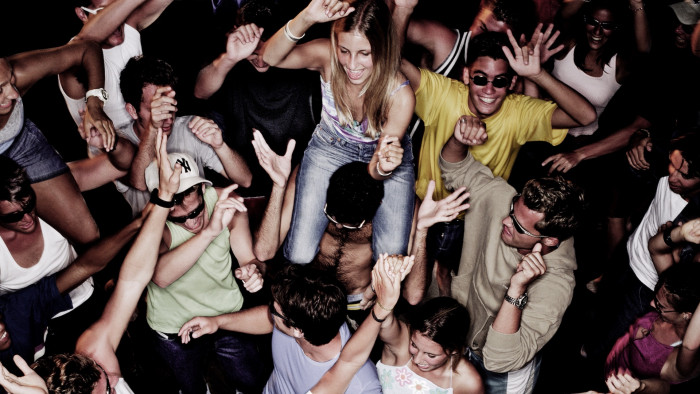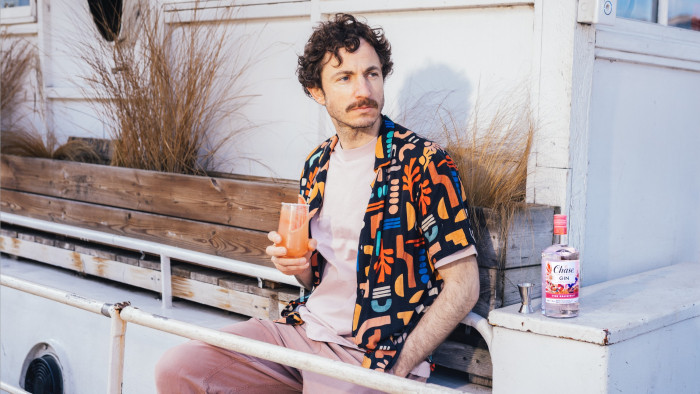I joined a gym in 1981 and I’m still training. Here’s the real reason I keep going
It has nothing to do with biceps


They made me do an induction before they allowed me access to the weights and I had to sign forms about injuries and illness – this was a potentially dangerous activity. A man in his forties showed me how to do the exercises. No one did this for five-a-side, there was an exciting element of firearms training about it. It was Wanstead Leisure Centre in East London and what they were allowing me access to was a small space with a single machine. It had various ‘stations’ at which pulleys linked to central stacks of weights. It was compact and forced you to lift uncomfortably close to other human beings.
I remember the room as having few, very small windows, plain walls with muscle charts and instruction posters, scuffed paint – emergency-room white. It was largely unobserved, unsupervised and seemingly rarely cleaned. The smell was rubber and sweat transformed by time into something woody and acid that felt cultivated and kind of cool. It was utterly cut off from the outside world. Nothing done there was for anyone else, no one cared if I came and pulled on the pulleys or never went again, the activity made no demands on my mind, there was no skill to master - despite the induction. There were never any women there. Hardly any people at all. Two men, I think a little older, were the only other attendees I can recall. Best friends, both very gentle and friendly to me and the biggest people I’d ever seen each around 6’5”/6’6”.
It was a smelly cell where men did things with their muscles to make them bigger. There was no element of fitness or health in the true sense, I can’t remember running machines or any kind of equipment not connected with making yourself a different shape. It was as though the machine itself, the multi-gym, needed housing and servicing by us, a Queen being fed by drones.
“So I’d been introduced to a room, a stinking, strip-lit cell, where I could perform simple movements and over weeks watch my body change very slightly, very slowly. I loved it”
We mainly bench-pressed. My huge friends had already reached the maximum weights the machine could supply. They were systematic about their workouts and balanced body parts but I didn’t like working my legs. I built my chest and my biceps. I used to go on Sundays with teenage hangovers and I enjoyed telling my mum that I was, “Going to the gym”. I was 17, always hungry, my body couldn’t make fat regardless of the chips and the grey, gristle-pocked 1980s burgers that formed much of my diet. I was trying to work out who to be, how to be, and “I’m going to the gym”.
It had a great, factual, action-based simplicity to it. It was fairly rare to lift weights in 1981 and that’s why my giant friends were still tugging at the pulleys. Gyms were either these squash court, tennis club side projects or they were body-building club houses; the secret society of muscle-men that no standard human would enter. I had looked in on one with my dad once in Stratford and the men were all faces placed into necks and shoulders stolen from prize bulls. Pumping Iron, the Arnie doc that helped make his career, had been out a few years and as I began to work out, his breakthrough Conan the Barbarian was released the following year, redefining what was possible with time and barbells – muscles were having their first real moment, but they were still exotic and largely American.
So I’d been introduced to a room, a stinking, strip-lit cell, where I could perform simple movements and over weeks watch my body change very slightly, very slowly. I loved it.
I have worked out in various ways ever since. That’s 36 years of running, lifting, pulling, kicking and punching. I’ve never taken a break, or become very unfit, nor have I ever been extremely fit, a bodybuilder or a triathlete, I’ve just kept going. Year after year – going for runs on the beach when I’m away, going for runs on rainy Midlands streets when I’m travelling for work. Doing those silly-feeling bedroom workouts when there’s been no gym and nowhere to run. I had hair and a red, denim waistcoat when I started. I have neither now. The workouts are often sloppy, unfocussed and involve a lot of wandering to the water fountain to ‘hydrate’, but there are always workouts.

I understand there are physical benefits but that’s not it. It’s so much more complicated and central to my identity and so much more healing than that. I want you to do it too. But if you haven’t already, I understand. The culture that has grown up around training, the inspirational Instagrams, the sharing of muscle selfies, the apps that encourage personal bests to be broadcast, it all leaves me cold. Culturally I’m with the smokers, the louche, the lazy and corrupt. If it works for you, then by all means join the world of #fitspiration, but I’m suspicious of those who adopt of the language of the heroic and the morally good. We who work out aren’t building shelters for the homeless, we’re building shoulders and abs. The act of working out is not in any way like going into battle for a just cause. ‘Let’s do this! Beast Mode!’ These are just ways of lending the whole business a drama it doesn’t really deserve and making exercise more inaccessible to those outside the hearty, American-Football-coach, faintly right-wing vibe.
The context for that first trip to the gym was national and personal chaos. Britain had seen the first of the 1980s urban riots, these were across the other side of London in Brixton, but the news fascinated us. Chaos was unleashed on a large scale across the other side of the tube map. Closer to home, in East London, recreational violence had taken hold and, loosely affiliated to football, young men used to beat other young men in the streets and pubs.
The feeling we all had, me and my friends, was that everyone at some point was beaten, everyone was drawn into a conflict created for adrenaline, for stories, to cement friendship groups, and they would be kicked and punched and slashed. Stanley knives - with their small blades designed for cutting carpet and lino - were the weapon of the day. Stabbing and murder were rare, but I was beaten unconscious on one occasion and hospitalised on another. This was unremarkable, inevitable. So at 5’7” and around 10.5 stone, and nursing a growing interest in foreign films, old books and music made by weird men with make-up, my soft flesh sent out a constant mating call to the fists and suede loafers of Ilford’s bored teens.
“At 5’7” and around 10.5 stone, and nursing a growing interest in foreign films, old books and music made by weird men with make-up, my soft flesh sent out a constant mating call to the fists and suede loafers of Ilford’s bored teens”
At work I was 17 so always the least qualified and least important person in every room, training for a job I had no talent for at all. I mostly delivering packages to people who appeared to be in full charge of their face and their personality and their destiny. Home was host to a divorce that had been developing for years.
So I moved from scene to scene with my line in defensive jokes, always looking for the kind of thing I ought to do, always looking as teenagers do, for hints as to who they’re supposed to turn into.
And then there was this room you could go to and make yourself feel stronger and manage your body, make it do as you wished. There probably was some element of imagining myself more attractive to girls and closer to the generally accepted model of manliness, but they were flimsy hopes I knew were fantasies. I still haven’t really met a woman who cares about muscle. What I found was something I could do for myself, something I owned entirely. Working with those pulleys and feeling the pleasant pain of muscle soreness and seeing myself as someone who could go somewhere and do something other people didn’t get was a hint at a personality. I was someone who climbed onto his three-gear, Rayleigh Superbe in the rain and made his chest slightly bigger. I could deal with the boredom, I could push myself.
Fitness has grown around me. One in every seven people are gym members now. There are five good gyms less than a mile from my office. So 36 years after I joined a smelly cell, my gym is a huge space with live DJs and a boxing ring and classes themed around everything from club culture to gymnastics.
My life is broadly without the fear of violence, my home is a place of warmth and battles over the Spotify, work keeps me swirling around at high speed and is always fun. But what hasn’t changed is the need to go to a place, a place of utter simplicity (I still basically lift heavy objects) and make some time just for me and my limbs. The unanswered emails, the meetings, the brainstorms are all barred at the door, as I hook myself to a pull-ups bar and count my reps (ten… often eight…frequently six). I turn to the gym when work presses in on my sleep, when life tests me. I’ve gone to the gym after saying goodbye to dying friends and family. Immediately after, hardly aware of what I was doing but wanting to do something. It’s remained a place where everything is straightforward and manageable. A place that doesn’t care if I go or not.
So when you go to the gym to enquire about membership, and they ask you about your fitness goal, tell them, “A sense of psychological and physical control in a world that often seems to be moving too fast around me without structure or meaning.” I promise you’ll still be training long after the man who wanted to lose a few pounds before Lanzarote.
Let’s do this!
(Images: iStock)
Latest


Ten things you need to know about Hyrox


Is clubbing actually good for you? We asked an expert


Horticulturist shares tips on how to urban garden
Related Reviews and Shortlists






